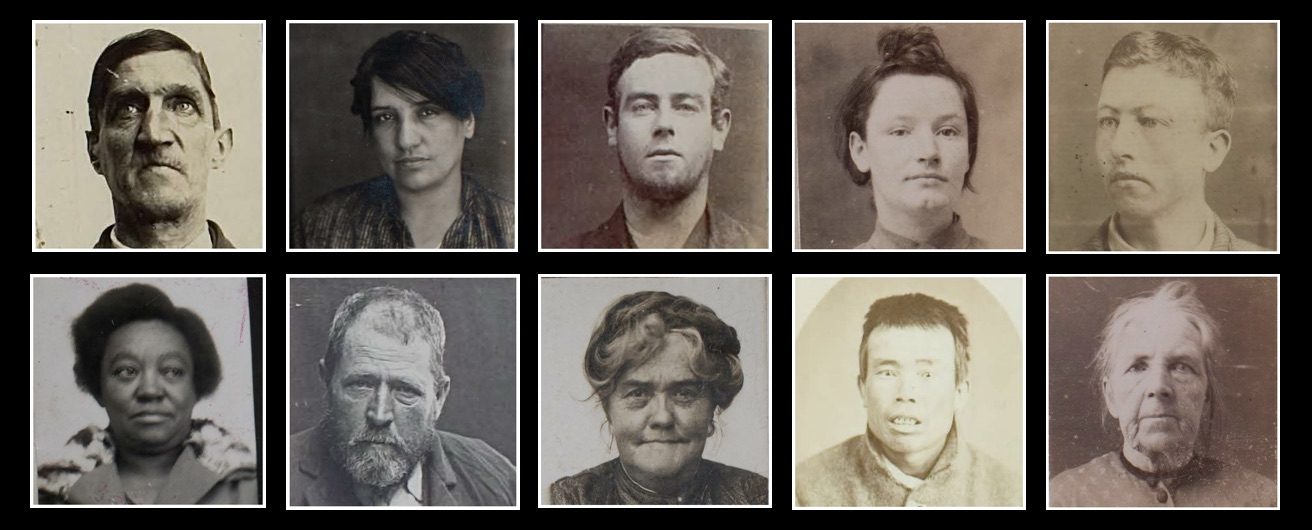Bellanta, Melissa. “The Larrikin Girl.” Journal of Australian Studies 34, no. 4 (2010): 499-512.
Bellanta, Melissa. Larrikins: A History. St Lucia: University of Queensland Press, 2012.
Birch, Tony. “‘These Children Have Been Born in an Abyss’: Slum Photography in a Melbourne Suburb.” Australian Historical Studies 35, no. 123 (2004): 1-15.
Bradford, Clare. “Instilling Postcolonial Nostalgias: Ned Kelly Narratives for Children.” Journal of Australian Studies 36, no. 2 (2012): 191-206.
Davison, Graeme, and David Dunstan. “’This Moral Pandemonium’ Images of Low Life.” In The Outcasts of Melbourne: Essays in Social History, edited by Graeme Davison, David Dunstan and Chris McConville, 29-57. Sydney: Allen & Unwin, 1985.
Delamoir, Jeannette. “’It Pulsates with Dramatic Power’: White Slavery, Popular Culture and Modernity in Australia in 1913.” Journal of Australian Studies, no. 82 (2004): 25-36.
Foster, Meg. “Murder for White Consumption? Jimmy Governor and the Bush Ballad.” In Archiving Settler Colonialism: Culture, Race, Space, edited by Yu-ting Huang and Rebecca Weaver-Hightower, 173-89. Abingdon, Oxon; New York, NY: Routledge, 2018.
Gaunson, Stephen. ““What Sort of Spot Is Port Arthur?”: For the Term of His Natural Life and the Tasmanian Gothic.” Senses of Cinema, no. 65 (December 2012).
Gaunson, Stephen. “Ned Kelly & the Movies 1906-2003: Representation, Social Bandrity & History.” PhD thesis, RMIT University, 2010.
Hergenhan, Laurie. Unnatural Lives: Studies in Australian Fiction About the Convicts, from James Tucker to Patrick White. St Lucia: University of Queensland Press.
Huggan, Graham. “Cultural Memory in Postcolonial Fiction: The Uses and Abuses of Ned Kelly.” Australian Literary Studies 20, no. 3 (2002): 142-54.
JHP. “Phillips’ Brief: “The Wild Colonial Boy” – Criminal Law in Song.” Criminal Law Journal 33 (2009): 287.
Johnson, Bruce. Dark Side of the Tune: Popular Music and Violence. Burlington, VT: Ashgate, 2008.
Kelen, Christopher. “Carrying a Swag: An Art of Theft.” Meanjin 58, no. 4 (1999): 142-51.
Knight, Stephen. “Patterns of Control in Australian Crime Fiction.” In Australian Popular Culture, edited by Ian Craven with Martin Gray and Geraldine Stoneham., 109-22. Cambridge; Melbourne: Cambridge University Press, published in association with Australian Studies and the British Australian Studies Association, 1994.
Knight, Stephen. Australian Crime Fiction: A 200-Year History. Jefferson, North Carolina: McFarland, 2018.
Knight, Stephen. Continent of Mystery: A Thematic History of Australian Crime Fiction. Melbourne: Melbourne University Press, 1997.
Knight, Stephen. The Mysteries of the Cities: Urban Crime Fiction in the Nineteenth Century. Jefferson, N.C: McFarland & Co., 2011.
O’Malley, Pat. “The Place of Crime in Popular History.” In Constructing a Culture: A People’s History of Australia since 1788, edited by Verity Burgmann and Jenny Lee, 36-45. Fitzroy: Penguin Books, 1988.
Piper, Alana. “Book Thieves: Theft and Literary Culture in Nineteenth and Twentieth-Century Australia.” Cultural and Social History 14, no. 2 (2017): 257-73.
Piper, Alana. “‘Woman’s special enemy’: Female Enmity in Criminal Discourse during the Long Nineteenth Century,” Journal of Social History 49, no. 3 (2016): 671-692.
Radic, Therese. “The Song Lines of Waltzing Matilda.” In The Australian Legend and Its Discontents, edited by Richard Nile, 105-16. St Lucia: UQ Press, 2000.
Roberts, David Andrew. “Russel Ward and the Convict Legend.” Journal of Australian Colonial History 10, no. 2 (2008): 37-58.
Routt, William D. “More Australian Than Aristotelian: The Australian Bushranger Film, 1904-1914.” Senses of Cinema, no. 18 (December 2001).
Seal, Graham. The Outlaw Legend: A Cultural Tradition in Britain, America and Australia. Cambridge: Cambridge University Press, 1996.
Seal, Graham. “Going for a Song: The Cultural Politics of ‘Waltzing Matilda’.” The International Journal of the Book 10 (2013): 67-72.
Weaver, Rachel. “Reflecting the Detectives: Crime Fiction and the New Journalism in Late-Nineteenth Century Australia.” Australian Literary Studies 22, no. 1 (2005): 61-72.
